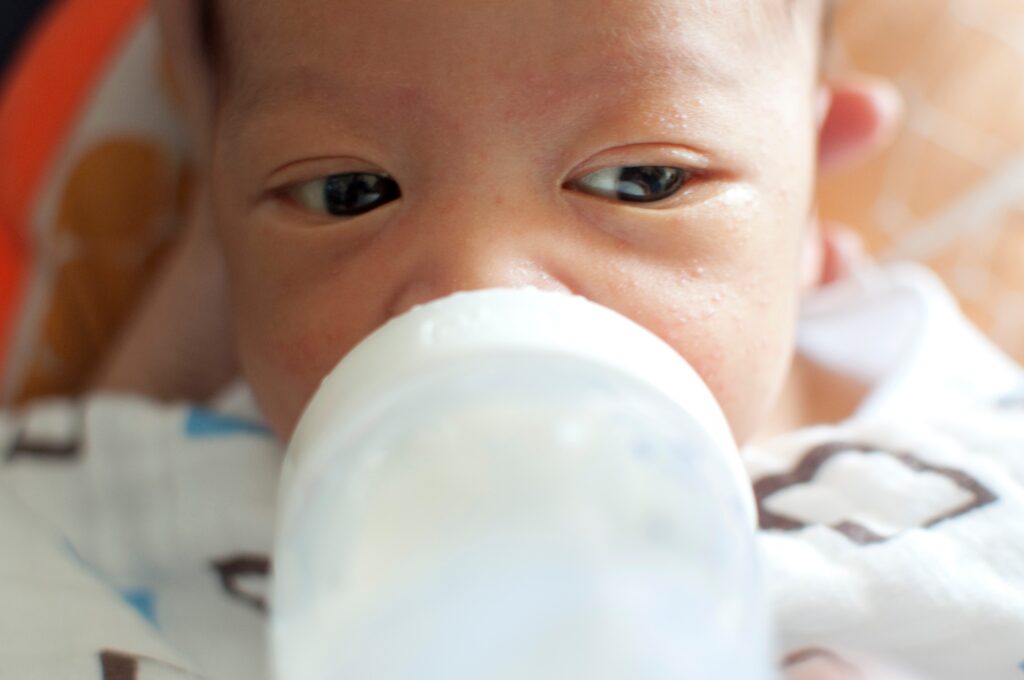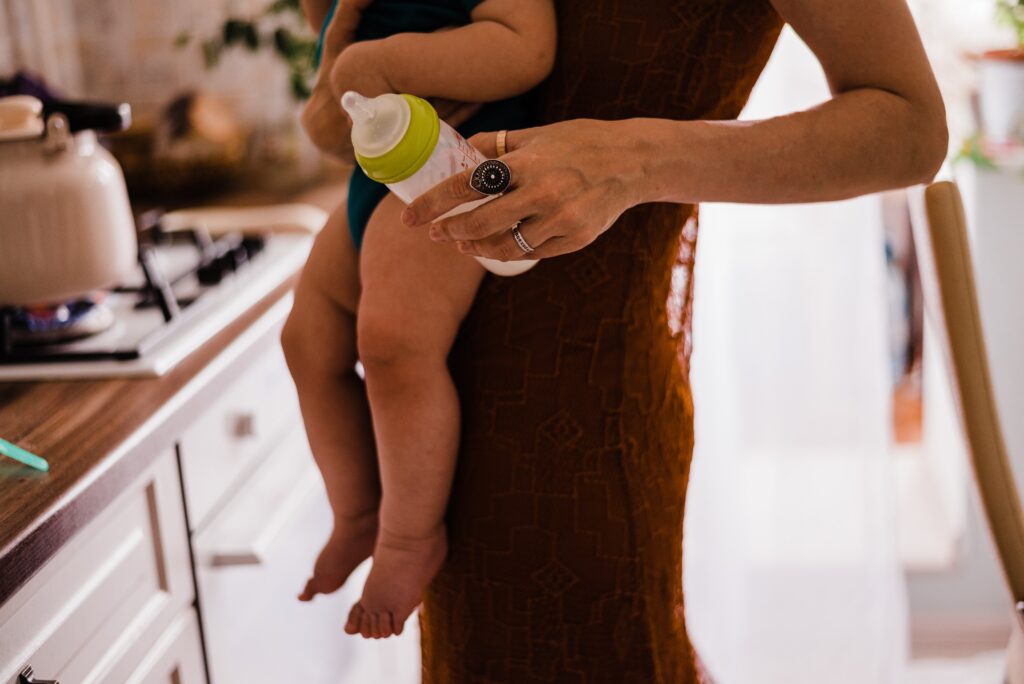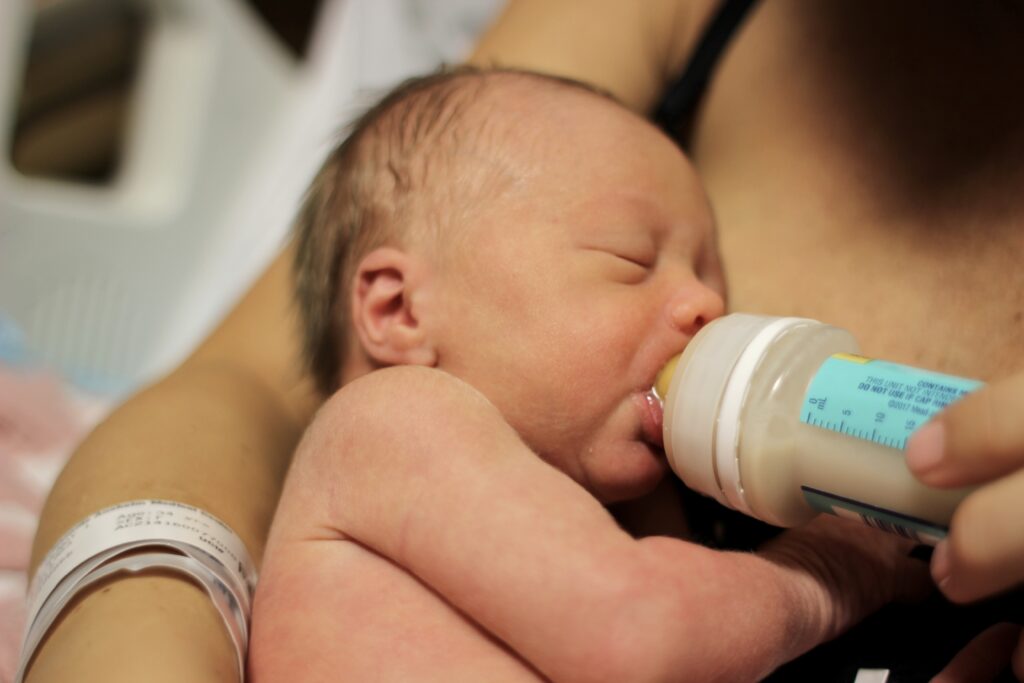Often, many parents wonder how to correctly substitute breastmilk with baby formula and ensure the baby gets the right amount of nutrients. It’s all in the numbers! Your unique situation will determine the number of cans needed per month. But let’s say you aren’t breastfeeding and want to know how many cans of formula you need per month, what’s an accurate number?!
A baby between 0 and 2 months old will need around 14 cans of formula, if they aren’t breastfeeding. If you are feeding a baby who is between 0-2 months old, between 8 –12 times per day as recommended, 1 can could last 3 – 4 days. Most cans contain 12.5 pounds (oz) of baby formula.
As kids grow older, the demand for formula changes and the amount required for the month grows.
This will depend on how frequently you will feed the baby and whether or not they aren’t breastfeeding at all. If the formula is replacing breastmilk, the quantity given to the infant should be similar to the breastmilk.
However, not all babies are born equally, meaning needs and preferences will vary. Additionally, baby formulas are manufactured in different kinds and quantities. Therefore, the amount required per month needs to take into account these variables.
How To Accurately Determine Cans Of Formula Needed Per Month

Several studies have been made on practices relating to formula-feeding. Such practices include how mothers acquire information regarding baby formulas.
This study revealed that mothers are influenced by details available on the formula tins and marketing content from the manufacturers. Information from these sources affects decisions such as what type of formula to buy and the quantity.
Whereas information provided by the formula manufacturer should be the best basis for decision making, unique situations call for tailored practices. For instance, a baby that’s born prematurely will require a special formula to boost its growth.
Similac NeoSure is a common preterm formula fed to boost a baby’s growth. Such formulas are administered in small quantities at the start and increase as the baby improves.
Another research showed that most mothers in the US formula-fed infants in month 1 and included solid food feeding in the second month. In the first month, most infants are satisfied with 3 – 4 ounces for every serving.
Since there are 16 ounces in every pound, it means you will need an average of 14 cans of formula for the first month, as we saw earlier. For the second month, this number will reduce if you introduce solid food feeding, for instance.
Otherwise, ounces per serving needs to be increased by 1 to a maximum of around 8 ounces. Unless advised otherwise, try to be within the limits of 32 ounces of formula per day.
The type of infant formula also plays a role in the amount supposed to be consumed. Essentially, most infant formulas are made from purified cow milk.
When packaged, they come in two forms; ready-to-feed liquid formula and dry powder formulas. The ready-to-feed formula is more expensive and requires to be consumed to completion once opened.
Cow milk contains two essential types of proteins; casein and whey, which are the main components of infant formulas.
Casein is more complex for babies to digest. Some manufacturers make formulas that are in higher casein content targeting babies who get hungry more often.
Consequently, this formula will last longer for kids who don’t get hungry fast, thus lowering daily intake and the required number of cans per month.
How Long Does A Can Of Formula Last For A Newborn

Each container of powdered formula makes a different amount of liquid formula for your baby to drink. A regular can weighing 12.5 Oz can make 80 – 82 fluid ounces.
However, large cans of about 22 oz produce about 140 – 143 ounces depending on the brand, while bulk refills weighing 30 – 36 Oz can make about 203 fluid ounces.
So, if a baby is consuming at most 32 ounces of formula per day, it will take 3, 5, and 7 days for them to complete 12.5, 22, and 30-36 Oz cans, respectively.
Most scoops will contain around 0.3 Oz of formula. With a ratio of 1:2 (1 scoop to 2 ounces of water) that’s recommended, it shows that for a 12.5 Oz can, it will take around 42 scoops to finish.
Ideally, powered formula ends up making more food when mixed with water. Case in point, a scoop of 0.3 Oz will end up making more ounces of liquid food, meaning the baby will get satisfied with less. In the long run, a can will last longer than expected.
Can You Feed On-Demand With Formula?

Breastfeeding mothers are encouraged to feed infants whenever they show signs of hunger instead of going by schedules. This has the advantage of keeping the baby fed, which reduces their chances of stress. For formula-feeding, this is not always the case.
Feeding newborns in the 0 – 2 months age bracket with an on-demand approach is reasonable. At this age, the baby responds to anger mainly by crying. Moreover, feeding patterns are hard to note at this age.
As they grow older, you will note changes in consumption, behavior to food, and other habits that will help you decide the best feeding approach.
Can A Can Of Formula Go Bad?
Baby formula manufacturers have handling specifications required to be followed to ensure they remain fresh. These specifications include storage conditions, expiration dates, and circumstances that affect them.
Unopened cans of formula can remain on the shelf and stay fresh up to the expiration dates, under the right conditions. On the other hand, opened cans should be consumed in one month from the day they’re opened.
For prepared formulas, the longest they can remain safe is 2 hours and 24 hours if refrigerated. These apply even for ready-to-feed infant formulas.
“Harmful bacteria can multiply in the bottle [when it’s left out to sit after a partial feed] and result in infecting your baby with a foodborne illness,” says Dr. Fish. “Due to their young age and lack of a fully developed immune system, the consequences could be severe to deadly.”
Enjoyed this? Make sure to read these next:
How To Increase Nipple Size For Feeding (6 EASY METHODS!)
What is the Best Breast Pump? 15+ Quick Tips For Pumping and Breastfeeding